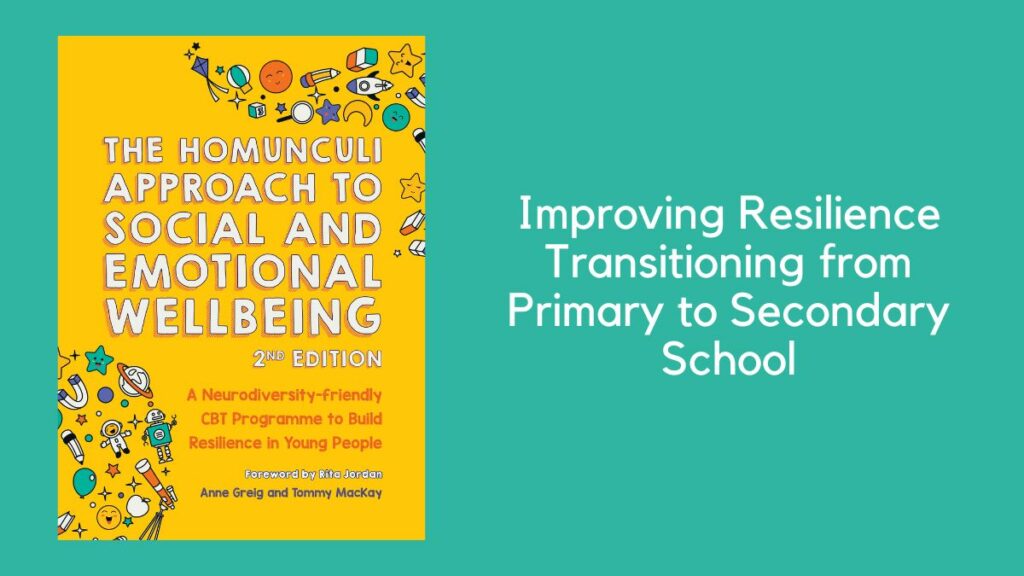
In recent times, perhaps owing in part to transatlantic influences and the Harry Potter Hogwarts sorting hat, the primary-secondary school transition has developed into a complex ‘rite de passage’, with leaving balls and school visits for all pupils as they come to the end of their primary schooling. During the transition period, children have to prepare for moving from the generally safe and familiar setting of the primary school to the unfamiliar surroundings of the secondary. This requires adaptation to a very different social, physical and educational environment. Socially they must embrace a vastly increased peer group in which they move from being the oldest to the youngest in the school. Their physical surroundings involve negotiating large and unfamiliar buildings, to which they are less likely to be able to walk from home, and perhaps coping with the demands of the bus queues. Educationally, they no longer hear the familiar voice of their class teacher all day, but progress to multiple teachers, multiple subjects, heightened curricular demands and diverse settings. The experience has been described by some researchers as one of the most difficult in pupils’ educational careers.
Although most children go on to complete the process without major difficulties, individual differences in risk and resilience are important in determining whether there are positive outcomes in the post-transition phase. This can lead to challenges for some children, including higher levels of anxiety, poor attainment and behaviour adjustment difficulties that may persist throughout schooling and beyond. One of the largest research studies, with a sample of over 2,000 pupils at the time of transition, looked in detail at outcomes for attainment and wellbeing over several years. Pupils were surveyed at age 11 just before transition, then in secondary school at ages 13 and 15, and finally after they had left school at age 18-19. It was found that although around a quarter of the pupils recalled no problems, the majority had some difficulty in coping at the start of secondary school, with a quarter finding the experience very difficult. Anxieties fluctuated in the earlier period of secondary school, but the more deep-seated anxieties only emerged later. By age 15, those who had had a poor transition had higher levels of mental health problems, lower levels of attainment and poor self-esteem.
Children with additional support needs are particularly vulnerable at the time of transition. They have been found to have higher levels of anxiety both before and after the move to secondary. Those who are on the autism spectrum can present additional challenges. They may face risks of bullying and isolation. If they have sensory issues they can find the noisy, busy environment of the secondary school overwhelming. Their need for sameness, their resistance to change and their reliance on routine can make a transition at this level a major life event which is very difficult to manage.
When we first created The Homunculi Approach, one of its key aims was to provide effective, evidence-based and enjoyable strategies for reducing anxiety and building resilience in children and young people with autism and other types of additional support needs. The Homunculi (or ‘little people’) is a fun, CBT-based activity for children and young people aged from seven through into the teenage years. The Homunculi are miniature agents with problem-solving mission and special gadgets who live inside the brain and help out with distressing thoughts, feelings and behaviours. Through inventing their own Homunculi characters and stories, participants learn to cope with real-life social and personal challenges. Complete with a large-format skull poster, character and storyboard templates and photocopiable record sheets, this unique resource includes everything needed to get started on making Homunculi stories, cartoons or videos.

The focus of the first edition of the book was at the level of the individual and of small groups. A central feature of the second edition is that we have added a new section on using the Homunculi as a whole-class approach. There is therefore something for those who are working with the individual child facing transition, with groups of vulnerable children or as a special project with a whole class in the final year of primary.
We have a new study in this area ready to be published soon. We took two classes in the transition year in two different schools which were well matched for class size, number of vulnerable pupils and other characteristics. One class carried out a special Homunculi project, while the other followed the normal transition year programme. There were no statistical differences on formal measures of anxiety before the intervention. However, we followed all of these children up during their first year in secondary school. We found that on all of our measures the pupils who had taken part in the Homunculi project had lower levels of anxiety and higher levels of resilience that those who had followed the normal programme.
The project was not just worthwhile in its outcomes but it was also great fun for the children. We had teachers involved both in the primary and secondary schools during the study and they loved doing it too. Everything fitted in with the schools’ curricular objectives.
A great feature of the whole-class Homunculi project was that it was fully inclusive to the extent that it did not need to single out the pupils with additional support needs. Every child in the class took part and so there were benefits both to those who were most vulnerable and also to all of the other pupils
In the second edition of The Homunculi Approach we have a whole new chapter – ‘A Whole Class Homunculi Project – Primary to Secondary Transition’, together with a range of resources to support it. It is hoped that many children, young people and their families will benefit through using the Homunculi and the many flexible resources it offers.
Anne Greig & Tommy MacKay
The Homunculi Approach to Social and Emotional Wellbeing is available here.